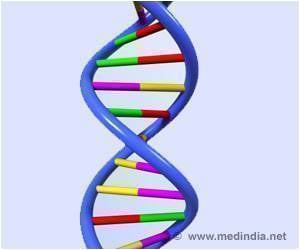Striving to understand the different genetic structures that underlie at least a subset of autism spectrum disorders are researchers.

The authors also make predictions in the study regarding how far back in the history of the family the disease-associated variants may have occurred. It’s far.
The research team led by Eric Morrow, assistant professor of biology in the Department of Molecular Biology, Cell Biology, and Biochemistry at Brown University, made its findings by analyzing the DNA of more than 2,100 children with autism who were born into "simplex" families where neither their parents nor a sibling has an autism disorder — a Simons Foundation data set known as the Simons Simplex Collection. The researchers combed through the genomes of affected children and their siblings for so-called "runs of homozygosity" — long strands of DNA in which the genetic material contributed by both the mother and the father turn out to be the same.
Many genetic disorders are recessive, meaning that they won’t occur in people who end up with at least one healthy copy of a gene. This may allow disease-associated variants to hide out in the population for generations without causing disease or fizzling out. But children with a high "burden of homozygosity," in which they have received long runs of the same DNA from each parent, might not get any working copies, as both mom and dad gave them the same flawed DNA. These parents may have unwittingly co-inherited these recessive variants from a distant shared relative about which neither parent is aware.
Virtually every participant in the study had small runs of homozygosity in their DNA here and there. For instance, everyone had at least runs of homozygosity adding up to a million DNA letters long. This reflects some degree of distant shared ancestry in the sample of parents who now live in North America. Approximately one-third of the pedigrees also had a least one larger block of homozygosity measured as 2.5 million letters. Parents of children with such larger blocks, the authors said, shared a common ancestor approximately 40 generations or 1,000 years ago.
The researchers found that among the more than 500 children in the sample with autism and intellectual disability — an IQ of 70 or below — there were frequently more large runs of homozygosity than in their unaffected siblings. The findings suggest that more deleterious recessive genetic variants were co-inherited from each parent in the affected sibling, the authors said, and these variants were derived from the remote shared ancestor of the parents.
Advertisement
"At the highest level, the importance of this paper is to refocus on runs of homozygosity as an element of the genetic variation that can contribute to the susceptibility to disease," said Morrow, a geneticist and psychiatrist who sees autism patients at the Bradley Hospital. "This new sort of variant looks like it is important in a subset of autism."
Advertisement
For a minimum run size of 2.5 million DNA letters, the affected siblings had a 1.32 times more runs of homozygosity than their unaffected brother or sister. Moreover, the likelihood of being affected with autism and having an IQ below 70 increased as total length of long runs of homozygosity increased.
The paper shows an association, therefore, in which a higher burden of homozygosity predicted a higher risk of developing autism with intellectual disability compared to a sibling. The study did not find any association between long runs of homozygosity and a risk of autism disorders without intellectual disability.
"Autism is a very broad, heterogeneous condition," Morrow said. "With genomics, we’ve begun to be able to dissect the heterogeneity into smaller groupings. We find an association between runs of homozygosity and those with co-occuring intellectual disability and autism, but not in so-called ’higher functioning’ autism."
The study also found a gender difference. In general girls are much less likely to be affected by autism but they tend to have more severe cases when they are, said study lead author Ece Gamsiz, who holds a Translational Neuroscience Fellowship at Brown and the Lifespan health care system through the Norman Prince Neurosciences Institute. As has been seen previously, in the new study’s data, girls were mysteriously abundant among the intellectual disabled patients, and those affected also showed a higher burden of runs of homozygosity compared to their sisters.
"In simplex families, [affected] females tend to have greater homozygosity compared to their same-gender unaffected siblings. This trend was not observed in same-gender male siblings," Gamsiz said. "Our study presents among the first data to suggest that the genetic susceptibility to the disorder may have some distinct aspects in girls and in ’lower-functioning’ autism."
An eventual biomarker?
In their search for genetic explanations of particular autism disorders, researchers have focused mostly on spontaneous mutations and having too many or too few copies of a gene to explain how autism arises in otherwise non-autistic families, Morrow said. Runs of homozygosity appear to be another place to look.
It is too soon to say, however, that homozygosity is a clinically useful biomarker, Morrow said, but with much more work it could prove to be.
"It’s an exciting possibility," said Morrow, who is also affiliated with the Brown Institute for Brain Science. "It could be in the picture where, if you have a person with autism and who has some degree of intellectual disability, and you see also they have large runs of homozygosity, then together you could say that constellation of symptoms might help us predict that they’d be less responsive to conventional treatments and we’d have to discern a new treatment pathway."
Source-Eurekalert















